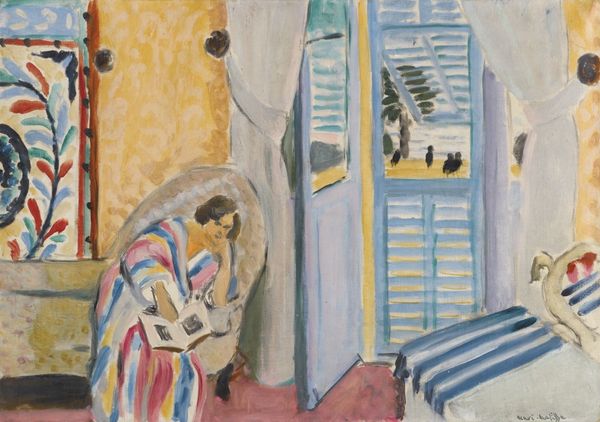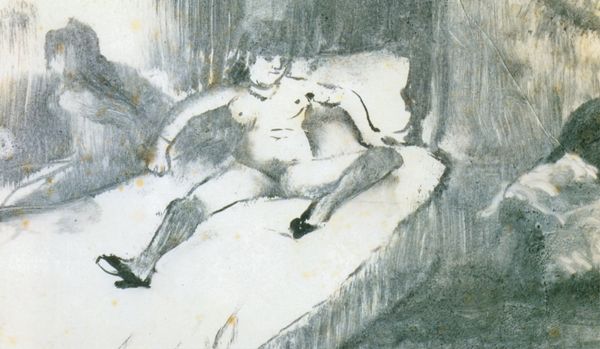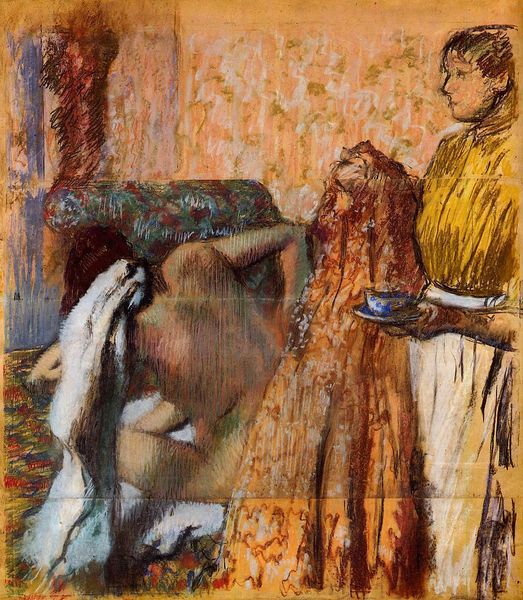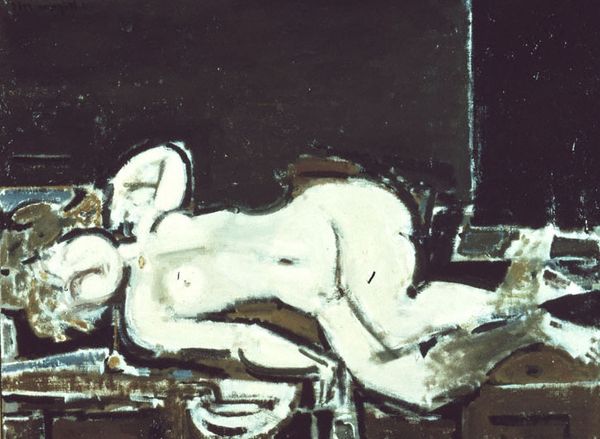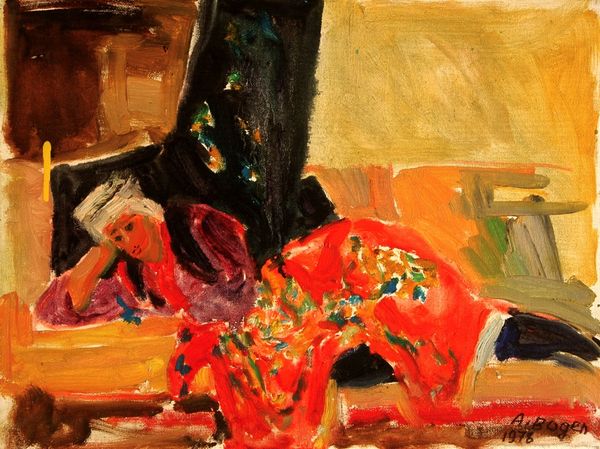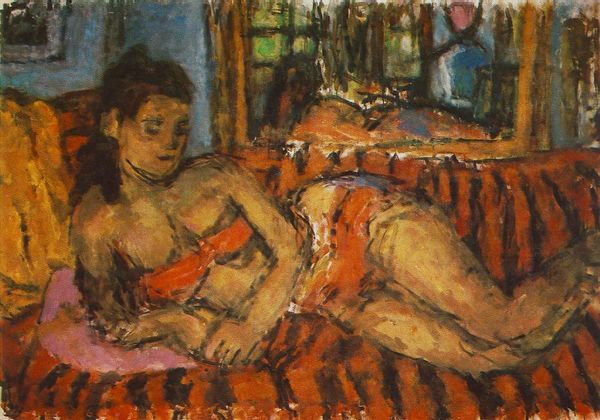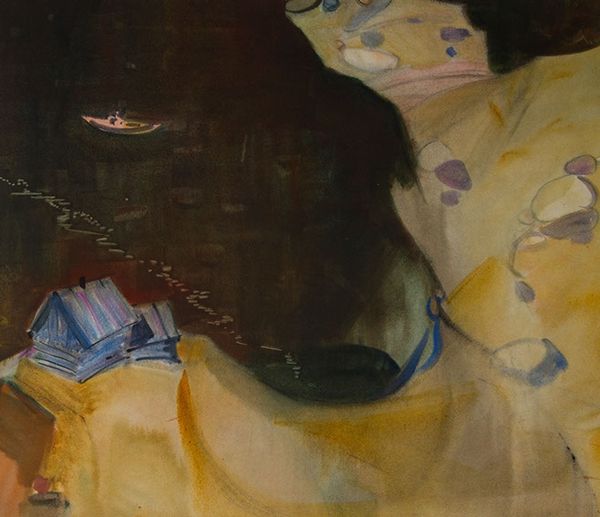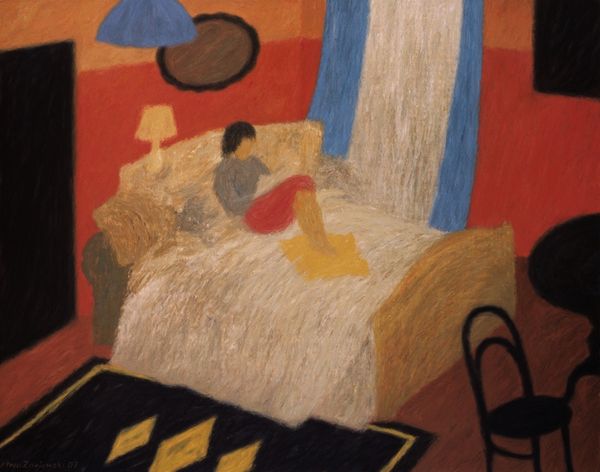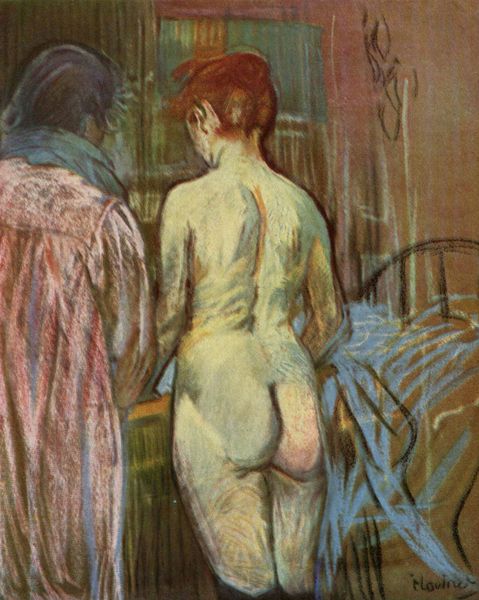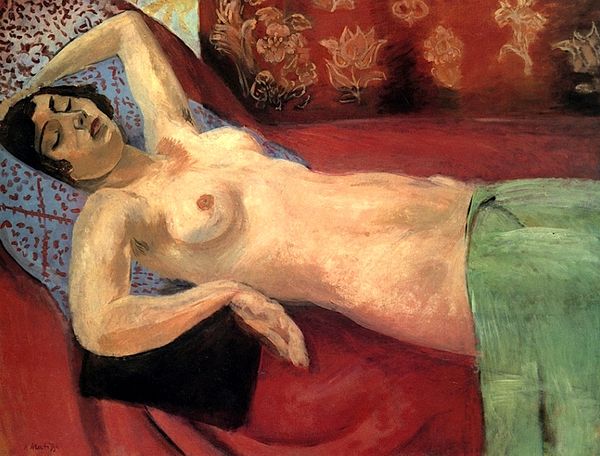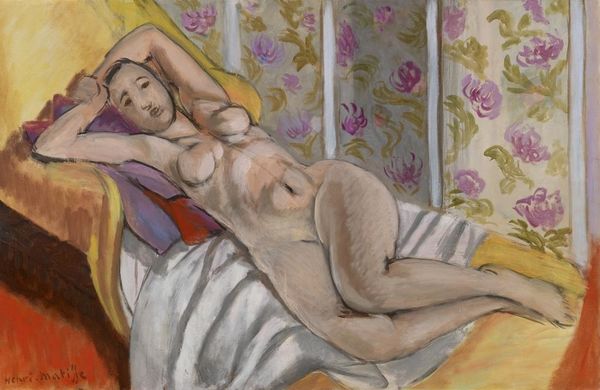
painting, oil-paint
#
portrait
#
painting
#
impressionism
#
oil-paint
#
oil painting
#
female-nude
#
intimism
#
genre-painting
#
nude
#
portrait art
#
expressionist
Copyright: Public domain
Editor: This is Degas' "Woman at Her Toilette," from 1877, rendered in oil paint. I'm struck by the somewhat claustrophobic composition and the almost unnaturalistic, cool lighting of the bedroom. What strikes you when you look at it? Curator: Formally, the compressed space is highly intriguing. Observe how the perspective is deliberately skewed. The eye is denied a comfortable vanishing point. Does the placement of the mirror add to, or detract from, this flattening of pictorial depth? Editor: I think it makes it more disorienting because it implies more space but then doesn't really deliver. It feels very deliberate. Curator: Precisely. Consider, too, the treatment of the figure. Degas isn't concerned with idealised beauty. The somewhat harsh, almost angular depiction, disrupts conventional expectations of the female nude. This directs our attention away from narrative or symbolism, instead emphasising the purely visual experience. Editor: So you're saying the focus is on how it’s painted, more than what is being painted? The colours, the shapes… Curator: Exactly. Reflect upon the juxtaposition of textures: the patterned wallpaper, the smooth skin, the rumpled bedclothes. Degas draws our attention to their inherent visual qualities and relations, regardless of their material associations. It's this acute sensitivity to formal relationships that makes it a pivotal work. Editor: That makes me appreciate how much thought went into the visual choices. I initially saw a woman in a room, but now I notice the dynamic between the lines and textures. Curator: Yes, by examining such features, we find our own modes of interpreting art beyond just taking a picture at face value. Editor: Absolutely, it’s like learning a whole new language. Thanks!
Comments
No comments
Be the first to comment and join the conversation on the ultimate creative platform.
